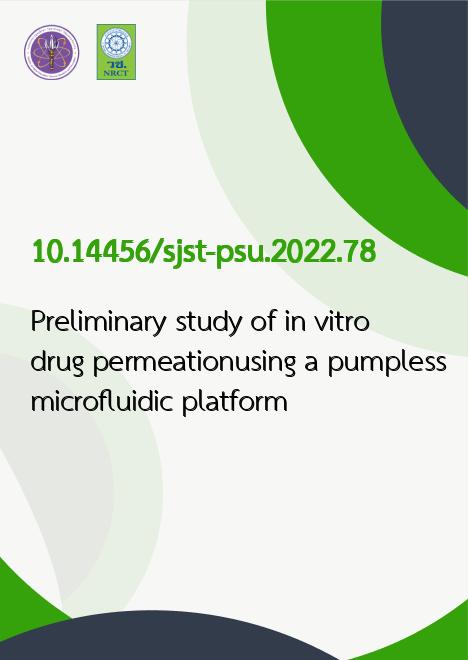
|
Preliminary study of in vitro drug permeationusing a pumpless microfluidic platform |
|---|---|
| รหัสดีโอไอ | |
| Creator | 1. Suchiwa Pan โ" On 2. Lavish Patel 3. Arindam Bit 4. Waree Tiyaboonchai |
| Title | Preliminary study of in vitro drug permeationusing a pumpless microfluidic platform |
| Publisher | Research and Development Office, Prince of Songkla University |
| Publication Year | 2565 |
| Journal Title | Songklanakarin Journal of Science an Technology (SJST) |
| Journal Vol. | 44 |
| Journal No. | 2 |
| Page no. | 562-567 |
| Keyword | chitosan, polyvinyl alcohol, membrane, microfluidic chip, electrospinning |
| URL Website | https://rdo.psu.ac.th/sjst/index.php |
| ISSN | 0125-3395 |
| Abstract | A 3-layer microfluidic device is developed using an inexpensive and readily accessible printer with commerciallyavailable printing material, polylactic acid. In addition, to serve as a semi-permeable membrane in microfluidic chip,chitosan/polyvinyl alcohol (CS/PVA) membrane was prepared using an electrospinning process. Electrospun membrane wasprepared from a mixed solution of 10% w/v of PVA and 2% w/v of CS. The obtained electrospun CS/PVA membrane showedwater resistance with a swelling degree of 97-98%. Their morphology observed by field emission scanning electron microscopyrevealed uniform and completely bead free structures at the CS/PVA volume ratio of 30/70, whereas at the volume ratio of 40/60produced some bead structure. The electrospun membrane was assembled into 3D printing microfluidic chip to preliminaryevaluate the drug permeability. By comparing between two nano-carrier systems for curcumin, the nano-carrier with smallerparticle size showed faster drug permeation than another one with larger particle size. The developed 3D printing microdevicescan be utilized gravity as the driving force, allowing for preliminary drug permeation screening with small amount of sample. |
